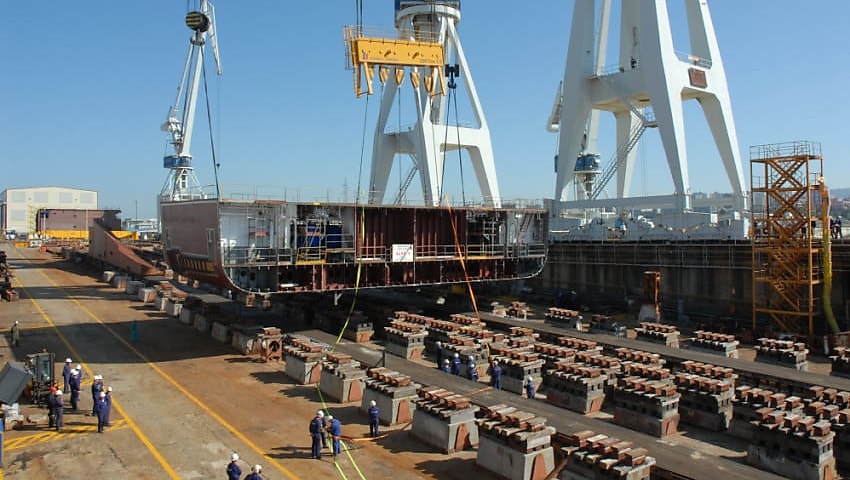As focus on each Australian state’s different shipbuilding capabilities are brought to life at the ongoing industry days across the country, Australian Manufacturing Growth Centre’s managing director spoke to Defence Connect about how Australia compares on a global scale.
To continue reading the rest of this article, please log in.
Create free account to get unlimited news articles and more!
Jens Goennemann, also a former managing director of Airbus Group Australia Pacific, said at present, shipbuilding can be broken into four categories, with Australia falling into one with two of its oldest allies.
"There are four categories of countries for ship builds," Goenneman began. "You have countries like the US, and they build enough ... naval ships, warships that they can sustain a workforce in its own right.
"Then you have countries like Korea and Japan, who have such a massive commercial ship build industry that they can grow on that workforce to build naval ships.
"Then you have countries in the third category. I would give them the yellow light. Not the green light, the yellow light, like Spain, France, Germany and Italy, to name a few, who have a healthy mix of both. They can get by.
"And then you have countries who have the ambition to build and sustain their own ships, but don't have the supporting industry for that. And Australia and Canada and the United Kingdom, they fall into this category."
Goennemann said while falling into this fourth category might sound like a negative outcome, there are opportunities from both a naval capabilities perspective as well as manufacturing as a whole.
"The United Kingdom has used the build of their nuclear submarines as their moonshot opportunity and built an industry around it," Goennemann said.
"And if we do that, and learn from that, and do that in Australia, I think that provides a massive opportunity. It is so tempting from the manufacturing viewpoint that we will not leave that opportunity untapped."
The UK is currently in the process of partially replacing 13 of its Type 23 Frigates with BAE Systems Type 26 Frigate, the Global Combat Ship (GCS). The Type 26 has been proposed by BAE Systems to Australia as part of the company's tender for the $35 billion Future Frigates Program.
Meanwhile, Canada has been modernising its naval capabilities over the past several years, with Defence Minister Harjit Sajjan unveiling a new 20-year defence policy, which includes plans for 15 new warships.
Australia's naval upgrade has been gaining traction since the release of the 2016 Defence White Paper. Australia will spend $89 billion over the coming years building 12 Future Submarines, 12 Offshore Patrol Vessels and nine Future Frigates.

 Login
Login







